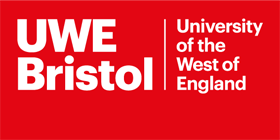Tackling transport is Bristol citizens’ biggest concern
Zoe Trinder-Widdess and Zoe Banks Gross on the results of the Council's recent Quality of Life report, and what it tells us about the priorities of Bristolians.
- 16th May 2019
Zoe Trinder-Widdess and Zoe Banks Gross on the results of the Council’s recent Quality of Life report, and what it tells us about the priorities of Bristolians. Both Zoes have day jobs working in health and community projects (including Bristol Health Partners), as well as being advocates for active travel in their spare time. They are running Walkability Easton on 20 May during Bristol Walk Fest and national Walk to School Week, along with another local parent, Abiir Omar. This guided walk will explore good and bad walking environments in the neighbourhood especially on school routes, bringing together local politicians, parents and children.
We, the citizens of Bristol, are most worried about transport, according to the Council’s 2018-19 Quality of Life report.
Every year the Council asks the people of Bristol a range of questions in the Quality of Life survey, to understand how we feel about our lives in the city. This year, the top three answers to “What action or change do you feel would most improve your overall quality of life in Bristol?”, were improving buses and public transport, reducing congestion and tackling noise and air pollution.
In fact, these issues have been the top three concerns for the last three years. Kye Dudd, the Council’s new cabinet member for Transport, said in a recent Bristol 24/7 interview that transport has by far the biggest mailbag. Bristol people really care about this.
This is a strong public mandate for tackling Bristol’s transport woes head on.
So how do we do this? From the survey, the top suggestion to get people out of their cars was to improve the bus network. Improving public transport is of course part of the solution. But another, more sustainable and health enabling, answer is active travel – basically walking and cycling.
As a city, we can be proud of some great active travel successes. In 2017, active travel charity Sustrans found that cycling keeps 24,000 cars off the city’s roads every day – the equivalent of a 73-mile traffic jam. Bristol West has more people walking to work than any other constituency in the country.
The Bristol Bath Railway Path carries many times more people on foot and bike than it ever did as a railway, proving the aphorism ‘build it and they will come’. It’s an example of adapting existing infrastructure to accommodate healthy travel. As well as being a motor vehicle-free arterial route it’s a linear park, giving an opportunity to spend time in greenspace – essential for our wellbeing.
But the survey showed that the people responding are slightly less inclined to ride their bikes than they were in 2017. And nationally, the number of children walking to school has plummeted, from 70 per cent a generation ago to less than half today. We must reverse this decline.
Getting children walking and cycling young means creating an environment where parents feel their children are safe. Reclaiming some space from cars for safer walking and cycling helps foster the independence kids need to develop their personal and social skills.
By making our city safe for its most vulnerable citizens – children, older people, people with disabilities – we make it better for everyone. Bristol’s One City Plan aims to end road deaths and serious injuries by 2040. More active travel would be central to achieving this noble aspiration.
The phenomenon of safety in numbers – the more people who walk and cycle, the safer it becomes – has been proved in research across Europe. There’s also evidence that you’re more likely to use active travel if those around you do. The more families who take the active travel option, the more normal it will be.
And the advantages are enormous. As well as the obvious sustainability benefits, walking and cycling are a way of getting a bit of much needed physical activity into our day.
We’re more likely to bump into neighbours for a chat if we’re on foot or bike, making us feel part of the community. Sharing new routes to cycle across town or walking to lesser known greenspaces bring us joy. And it’s usually faster to walk short distances than to drive.
Spending more time outside of metal boxes makes us more connected to our environment, whether that’s experiencing Bristol’s ever-changing weather, or seeing its chronic traffic from the other side of the windscreen.
The Quality of Life survey shows this is the biggest issue our city faces. We must all play our part, from leaving our cars at home for shorter journeys, to demanding the infrastructure that Bristol deserves.






